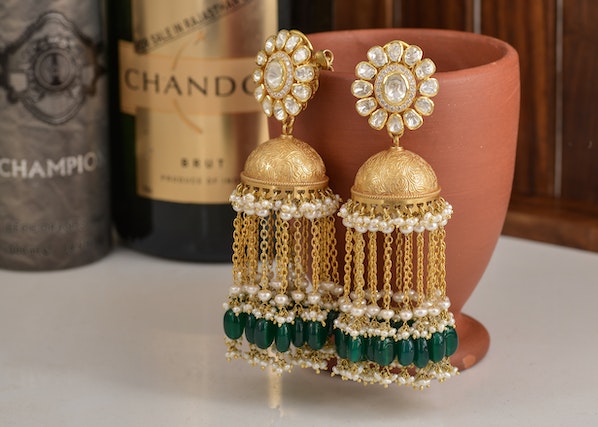Jewelry has been enchanting humanity for centuries, adorning bodies and reflecting personalities, cultures, and even wealth. From intricate ancient designs to contemporary masterpieces, jewelry holds an undeniable allure that transcends time. Let us embark on a captivating journey, exploring the captivating tapestry of jewelry history.
Primordial Origins
The history of jewelry dates back thousands of years, with its origins deeply rooted in ancient civilizations. Archaeological discoveries reveal that our ancestors, even in the most primitive cultures, adorned themselves with shells, feathers, bones, and stones. These natural elements were believed to possess symbolic and spiritual significance, protecting the wearer and connecting them to the natural world.
The Lustrous Ancient World
As human civilization advanced, so too did the art of jewelry-making. In ancient Egypt, jewelry played a central role in both religious and personal adornment. Pharaohs and high-ranking officials were frequently buried with lavish jewelry, reinforcing their status in the afterlife.
Across the Mediterranean, the ancient Greeks crafted exquisite jewelry, often incorporating mythological figures and natural motifs. The Etruscans, an ancient Italian civilization, became renowned for their gold earrings, bracelets, and intricate necklaces adorned with delicate enamelwork.
Meanwhile, the Romans embraced opulence, adorning themselves with elaborate gemstone-encrusted jewelry. These pieces symbolized wealth, power, and social standing, becoming essential status symbols within the Roman Empire.
Medieval Elegance
With the arrival of the Middle Ages, jewelry took on new forms. The Byzantine Empire, a successor to the Roman Empire, created highly decorative pieces, featuring intricate filigree work and precious gemstones. Christianity heavily influenced Byzantine jewelry, with crosses and religious motifs serving as popular designs.
As Europe transitioned into the Renaissance period, jewelry once again flourished. The nobility and aristocracy adorned themselves with magnificent pieces, showcasing intricate metalwork, pearls, and gemstones. Renaissance jewelry epitomized the essence of the era – a rediscovery of classical art and a celebration of human achievement.
An Era of Enlightenment
The 18th and 19th centuries brought about new jewelry trends, reflecting the profound cultural and social changes of the time. During the Georgian period, intricate and delicate jewelry gained popularity, featuring intricate metalwork, pearls, and gemstones carefully arranged to create symbolic and romantic designs.
As the Victorian era dawned, Queen Victoria’s deep affection for jewelry set the tone for the period. Victorian jewelry designs often incorporated sentimental motifs, such as hearts, flowers, and lockets, while gemstones symbolized various emotions. The Industrial Revolution marked a shift towards mass production, leading to affordable jewelry for the growing middle class.
Innovation in the Modern Age
The 20th century witnessed an explosion of experimentation and innovation in jewelry design. Art Nouveau revolutionized the scene with its flowing and organic forms inspired by nature. Artists such as René Lalique and Louis Comfort Tiffany embraced innovative materials such as enamel, ivory, and colored glass, transforming jewelry into wearable works of art.
The Art Deco movement, emerging in the 1920s, embraced geometric shapes, bold colors, and a modernist approach. Jewelry design became streamlined and symmetrical, mirroring the era’s excitement for progress, industrialization, and excess.
Contemporary Expressions
Today, jewelry continues to evolve, echoing various cultural influences and individual expressions. Contemporary designers draw inspiration from diverse sources, incorporating symbolism, abstraction, and sustainability into their creations. Precious and semi-precious gemstones, unconventional materials, and innovative techniques merge to create pieces that blur the lines between art, fashion, and personal expression.
As we reflect on the shimmering legacy of jewelry, we recognize its profound impact on our personal identities, cultural values, and history as a whole. From ancient talismans to modern statement pieces, jewelry remains an enduring testament to human creativity, craftsmanship, and the desire to embellish ourselves with beauty and meaning.
